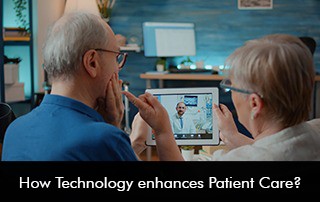Healthcare technology is bliss for medical practices and hospital systems as it has helped them to streamline administrative, clinical, and financial procedures. With integrated Electronic Medical Records (EMR) software solutions, even the smallest clinics can work effectively to improve patient outcome levels. Medical billing, physician documentation, charting, and patient scheduling can take a lot of time. By deploying digital tools to automate these tedious processes doctors can focus on taking care of their patients.
Technology Advancements
Health information being integrated with robust EHR software systems and Practice Management (PM) software solutions has facilitated clinicians to stay updated in real-time about important patient data. This can include; medical history, medications, and past allergies. Hospitals in the United States are now connected to these powerful software systems which allow for the seamless transfer of data through technological advancements of interoperability which leads to efficient care and improved patient outcome levels.
Role of Healthcare Technology for Patient-Centered Care
Technology innovations have revolutionized the way practices operate providing them with a better window of opportunity to offer care to their patients. Patients also expect physicians to use healthcare technology solutions to improve the patient experience.
- Electronic Medical Records Software – Practices are deploying EMR systems that help in medical diagnosis and treatment. The advanced features of automatic alerts in the software help to enhance patient safety and reduce the chances of any errors associated with hand-written prescriptions. The physician documentation process is simplified through tools of voice recognition which automatically records patient encounters. This allows the healthcare provider to focus on the patient.
- Telemedicine – The Telemedicine EMR Software platform has helped in the ongoing medical crisis due to the COVID-19 pandemic. Telemedicine has helped clinicians to reach out to patients remotely. Virtual sessions are effective for quickly diagnosing and treating mild symptoms of the virus and providing ongoing care to patients with other underlying health conditions such as diabetes and blood pressure. Patients can easily schedule telemedicine sessions with their healthcare provider without having to travel down to the clinic, which also reduces costs. Due to the convenience and effectiveness of telehealth, many patients are convinced by this robust technology.
- Improved medical billing – Medical billing is complex and providers can’t invest their time into tedious financial procedures. With the Billing Services (EMR) Software system healthcare providers don’t have to worry about claims being rejected. With accurate and effective medical billing and coding, the issue of denied claims is taken care of and practices are paid faster. Patients are also satisfied with precise billing operations.
- Remote patient monitoring tools – Remote patient monitoring tools help patients to monitor their health at home which helps to save costs. Remote monitoring tools are excellent for patients with chronic illnesses. RPM technology sends data to remote health centers in real time. When clinicians are better informed they can avoid any adverse medical conditions.
- Enhanced communication – Communication is important between the patient and the healthcare provider. The Patient Portal platform facilitates seamless communication between providers and patients through HIPAA-compliant two-way messaging. Patients can message around the clock and can receive medical guidance without having to wait on the phone. The patient portal also allows patients to pay online bills and fill out in-take forms which save their time in the waiting room. The portal is a convenient and fast way to connect patients and physicians. The web connects can also be used by patients to access their tests or lab results. The patient portal is a great way to empower patients and improve patient satisfaction scores.
Using AI technology to revolutionize healthcare
Artificial Intelligence (AI) has great potential in healthcare. Many health systems have adopted AI to design treatment plans and speed up patient diagnosis through AI algorithms.
Just recently, Microsoft and Nuance announced the first-ever fully AI-automated clinical documentation application. The clinical documentation app finishes documentation in seconds helping to alleviate clinician burnout and decrease the administrative burden.
Moving ahead
By leveraging healthcare technology and software solutions healthcare providers and organizations can provide patient-centered care. Digital solutions can support the provider’s decision-making process as accurate data is available at their fingertips. Technology is the only sustainable solution to enhance patient diagnosis, treatment, and care processes.







